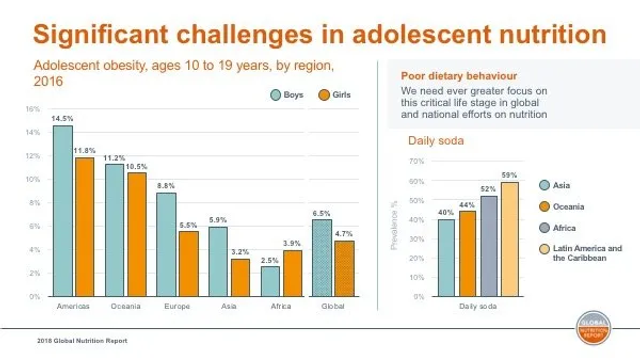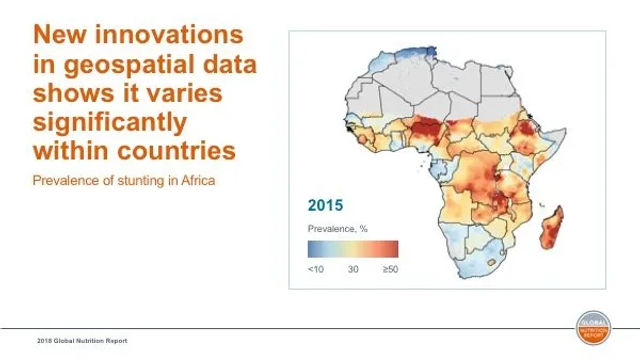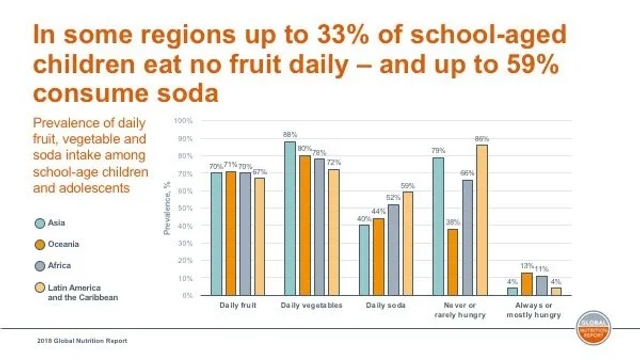2018 Global Nutrition Report Released
The 2018 Global Nutrition Report was launched on November 29. Among its authors are 3 SDSN affiliates: Jessica Fanzo, a member of the Thematic Network on Sustainable Agriculture and Food Systems , Zulfiqar Bhutta, a member of the Thematic Network on Health for All , and Cynthia Rosenzweig, a member of the Leadership Council. Now in it’s fifth year, the report serves as a mechanism for tracking stakeholder commitments on nutrition and includes actions by governments, donors, civil society organizations, academia, the UN system, and business.
Key highlights of the report include:
The burden of malnutrition across the world remains unacceptably high . Malnutrition is responsible for more ill health than any other cause, and affects every single country. 150.8 million children under age 5 are stunted, 50.5 million are wasted, and 38.3 million are overweight. 20 million babies are born of low birth weight each year. Overweight and obesity among adults are at record levels with 38.9% of adults overweight or obese, stretching from Africa to North America, and increasing among adolescents. Women experience higher rates of obesity and anemia than men, with anaemia affecting one third of all women of reproductive age; at the same time, millions of women are underweight.
Significant steps are being made to address malnutrition. Globally, stunting among children has declined and there has been a slight decrease in underweight women. The global community and national stakeholders have never been better placed to deliver results, as the political will to act in many countries is high, and many successful policies have been rigorously tested and scientifically proven. Advances in data enable greater understanding of the nature of malnutrition in all its forms and its causes, and can better support action and track progress.
We need to act urgently to achieve SDG 2 and end malnutrition in all its forms by 2030. The 2018 Global Nutrition Report provides a data update on the key steps needed to do so. They include breaking down silos and developing comprehensive programs, investing in data and building capacity to use it, scaling up and diversifying funding for nutrition, focusing on healthy diets to drive better nutrition everywhere, and improving the targets and committments that are driving actors.
The full report along with excellent case studies of successful interventions and data visualizations are available at https://globalnutritionreport.org.




